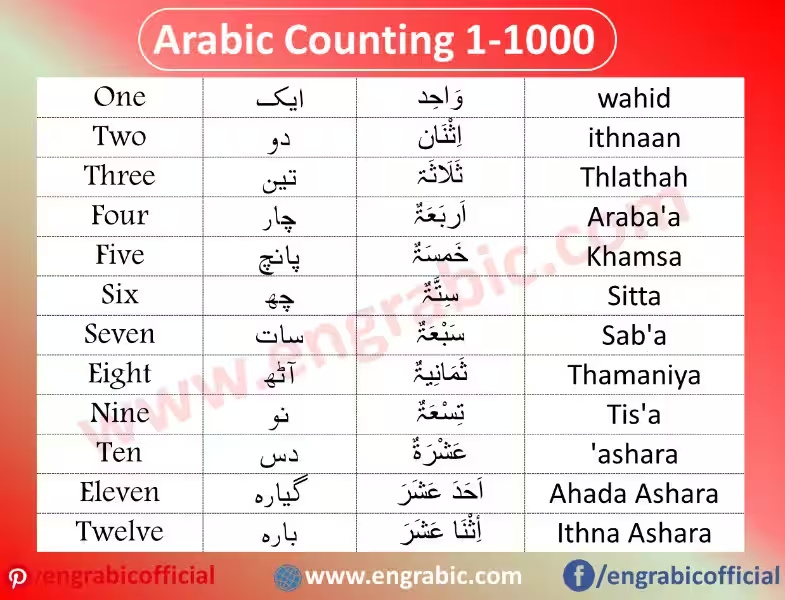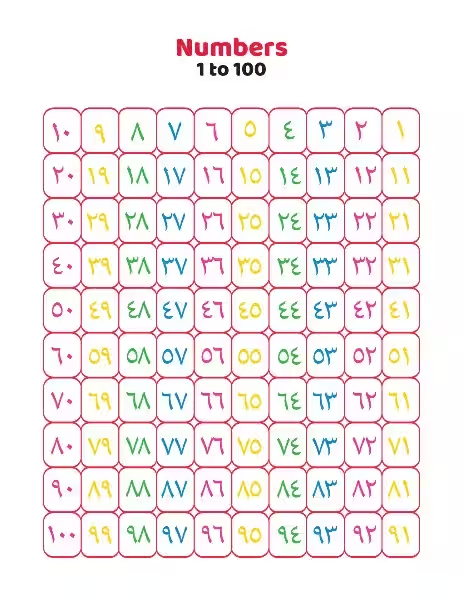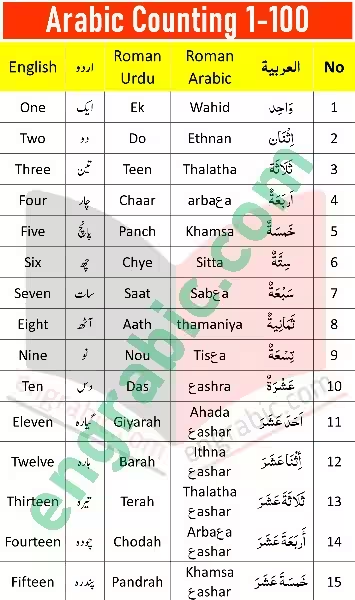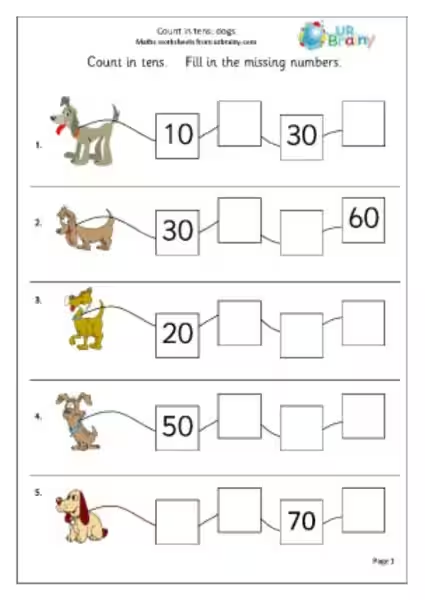
Learning to count in a new language is a fun and rewarding experience. It’s a fundamental step in opening up new worlds of communication and understanding different cultures. In this article, we’ll embark on a journey to master the Arabic numbers from one to ten. Get ready to expand your linguistic horizons and start counting in Arabic with confidence!
The Basics: Arabic Numbers 1-5
Let’s begin with the first five numbers, which form the foundation for understanding the rest of the Arabic number system:
One: واحد (waahid)
The Arabic word for one is “waahid.” It’s pronounced with a long “a” sound, similar to the “a” in “father.” This word is relatively straightforward to pronounce and remember.
Two: اثنان (ithnaan)
The Arabic word for two is “ithnaan.” It’s pronounced with a slightly rolled “r” sound, similar to the “r” in “rat.” Pay attention to the “th” sound at the beginning, which is similar to the “th” in “think.”
Three: ثلاثة (thalaatha)
The Arabic word for three is “thalaatha.” Similar to the previous numbers, it features the “th” sound at the beginning. The “a” sounds are pronounced with a long “a” sound, like in “father.”
Four: أربعة (arba’a)
The Arabic word for four is “arba’a.” Pay attention to the “a” sounds, which are pronounced with a long “a” sound, like in “father.” The “r” sound is a bit softer than the “r” in “rat.”
Five: خمسة (khamsa)
The Arabic word for five is “khamsa.” It has a slightly different sound than the previous numbers. The “kh” sound is similar to the “ch” in “Bach.” The “a” sounds are pronounced with a long “a” sound, like in “father.”
Expanding Your Vocabulary: Arabic Numbers 6-10
Now that you’ve mastered the first five numbers, let’s continue our journey by exploring the Arabic words for six through ten:
Six: ستة (sita)
The Arabic word for six is “sita.” The “s” sound is pronounced similar to the “s” in “sun.” The “i” sound is short, similar to the “i” in “bit.”
Seven: سبعة (sab’a)
The Arabic word for seven is “sab’a.” The “s” sound is pronounced similar to the “s” in “sun.” The “a” sounds are pronounced with a long “a” sound, like in “father.”
Eight: ثمانية (thamaaniya)
The Arabic word for eight is “thamaaniya.” The “th” sound at the beginning is similar to the “th” in “think.” There are two “a” sounds, both pronounced with a long “a” sound, like in “father.”
Nine: تسعة (tis’a)
The Arabic word for nine is “tis’a.” The “s” sound is pronounced similar to the “s” in “sun.” The “a” sounds are pronounced with a long “a” sound, like in “father.”
Ten: عشرة (ashara)
The Arabic word for ten is “ashara.” It’s pronounced with a slightly rolled “r” sound, similar to the “r” in “rat.” Pay attention to the “sh” sound, which is similar to the “sh” in “ship.”
Counting Beyond Ten: Applying Your Knowledge
Now that you’ve learned how to count to ten in Arabic, you can start using this knowledge to count higher numbers. The Arabic number system follows a similar pattern to other languages. For example, to count to eleven, you would say “ashara waahid” (ten and one). To count to twenty, you would say “ishrin” (twenty).
Tips for Mastering Arabic Numbers
Here are some practical tips to help you solidify your understanding of Arabic numbers:
- Practice Regularly: The key to learning any language is consistent practice. Make time each day to review the Arabic numbers and try to count out loud.
- Use Flashcards: Flashcards are a great way to visualize and memorize the Arabic words for numbers. Write the Arabic word on one side and the corresponding number on the other.
- Listen to Arabic Songs and Audio: Immerse yourself in the Arabic language by listening to songs and audio recordings that feature numbers.
- Find a Language Partner: Learning a language with a partner can be motivating and helpful. Find someone who also wants to learn Arabic and practice counting together.
Counting to ten in Arabic is a great starting point for exploring the language and culture. With consistent practice and a little dedication, you can master the basics and start using Arabic numbers in your everyday life. As you continue learning, you’ll discover the beauty and richness of the Arabic language and its fascinating history. So, keep counting, keep learning, and enjoy the journey!
Frequently Asked Questions
How do you count to ten in Arabic?
- واحد (waahid)
- اثنان (ithnaan)
- ثلاثة (thalaatha)
- أربعة (arba’a)
- خمسة (khamsa)
- ستة (sita)
- سبعة (sab’a)
- ثمانية (thamaaniya)
- تسعة (tis’a)
- عشرة (ashara)
- Learn Arabic reading, writing, and speaking.
- Free lessons cover numbers 1-10.
- Native Arabic speakers provide correct pronunciation.
- Focus on pronunciation, not just written form.
- Learn through listening and repetition.
- Lesson includes words and sentences with numbers.
- Learn practical Arabic for everyday use.
- Free access to the lesson content.
- Designed for beginners.
- Simple and straightforward approach.
- Emphasis on pronunciation accuracy.
- Audio-visual learning experience.
- Interactive learning through quizzes.
- Build a foundation in Arabic language.
- Learn at your own pace.
- Suitable for independent learning.
- Accessible online platform.
- Free trial of L-Lingo Arabic app.
- Full-featured app for comprehensive learning.
- Audi-visual learning tools for better understanding.
- Progress tracking through quizzes.
- L-Lingo Arabic offers similar features to L-Ceps Personaltrainer.
- L-Lingo Arabic is a web-based application.
- No software download needed.
- Accessible from any device with a browser.
- Try L-Lingo Arabic for free.
- Explore more free Arabic lessons.
- Effective learning resource for Arabic language learners.
- Improve your fluency and confidence in speaking Arabic.
- Start your journey to learn Arabic today!








